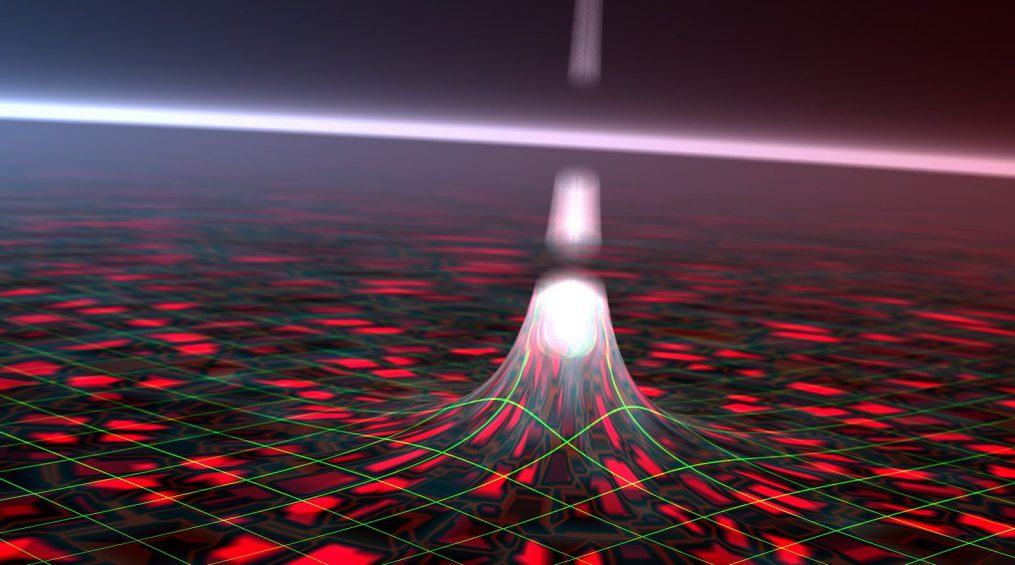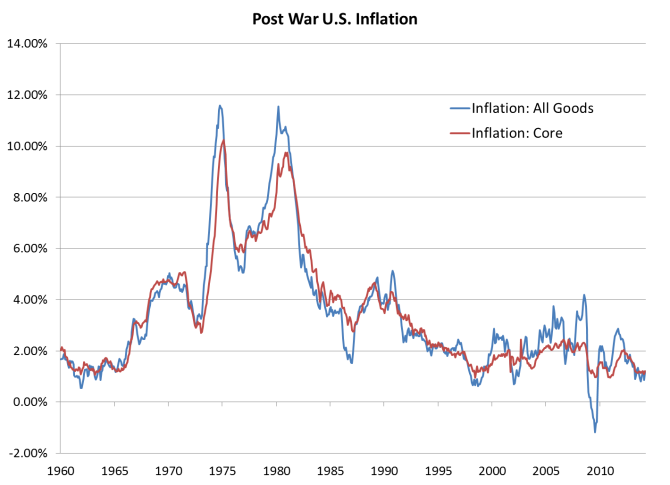A common narrative: analysts who used traditional Keynesian tools to understand the crisis made better predictions and were in a better position to diagnose the problem. This narrative may be comforting to some but unfortunately it’s not correct.
In some sense, the truth of our predicament is even scarier. Macroeconomists were caught completely off-guard by the financial crisis. None of the models we were accustomed to use provided insights or policy recommendations that could be used for fighting the crisis. This is particularly true for New and Old Keynesian models. The New Keynesian model (particularly its DSGE manifestations) was the dominant macroeconomic paradigm in the pre-crisis period and judging by many of the presentations at the National Bureau of Economic Research (NBER) summer meetings, the New Keynesian or Old Keynesian (referred to as “paleo Keynesian” by some of the meeting participants) continue to serve as the primary lens through which we try to make sense of the macroecononmy.
It its standard form, neither the New Keynesian model nor its paleo-Keynesian antecedent feature a meaningful role for financial market failures. As a result, the policy response to the crisis was largely improvised. This is not to say that the improvised policy actions were bad. Improvisation guided by Ben Bernanke was about as good as we could hope for. Nevertheless, for the most part, the models we were accustomed to use to deal with business cycle fluctuations were simply incapable of making sense of what was going on. In one of Stefanie Kelton’s recent podcasts, economist Randy Wray makes exactly this point. While I typically do not grant much credence to heterodox economists, in this instance Professor Wray’s diagnosis is completely correct. Fortunately, as Noah Smith pointed out in an earlier column,macroeconomists have been working, and continue to work, on developing models that can be used to analyze financial market failures.
In addition to the fact that the prevailing business cycle theories did not incorporate financial sectors, the components that were featured prominently were not performing well. The cornerstone of pre-crisis macroeconomic theory was price rigidity. In New Keynesian models, price rigidity results in a Phillips curve relationship – more specifically, a New Keynesian Phillips curve. According to the Phillips curve, if inflation was unusually high then output would be above trend. If it was low then output would be below trend.
The financial crisis of 2007-2008 and the Great Recession that followed proved to be a particularly bad episode for the New Keynesian model. Contrary to Paul Krugman’s assertion that traditional Keynesian models performed well, the key mechanism in the New Keynesian framework – the Phillips curve – was a virtual failure. In a recent post commenting on John Cochrane, Noah Smith plots quarterly price growth during the recession and notes that inflation did fall a bit during the recession. In his words “inflation not only plunged during the recession, but remained low after the recession.” The chart below shows core inflation (inflation for all goods excluding food and energy) since 2004. Clearly inflation fell once the recession took hold. Prior to 2008 annual inflation had been roughly 2 percent. Inflation fell during the recession [1] to roughly 1 percent.
To put this change in perspective, the next chart plots annual inflation for the entire post-war period. The blue line is the inflation rate for all goods in the CPI. The red line is core inflation.
There have been many large swings in inflation during U.S. history. Compared to historical variations in inflation through the post-war, the changes in price growth during the Great Recession were quite mild. Notice that because the large drop in the overall inflation rate is not in the core measure, this movement reflects changes in food and energy (primarily oil prices). If the 1 percent reduction in core inflation is sufficient for the Keynesian model to generate the huge recession we just went through then where was the huge recession in the late 1990s? Where was the enormous recession in 1986?
In his 2011 AEA presidential address Bob Hall proposed modifying the Keynesian model by treating inflation as “nearly exogenous.” One might interpret this modification as a “hyper-Keynesian” element – the exogeneity of inflation arises because the Phillips curve is essentially flat so even minor variations in inflation cause sharp changes in output. Alternatively, one could interpret the modification as a capitulation of sorts. The inflation block of the model is incorrect and so Hall removed it, letting inflation march to its own beat, unaffected by developments within the system.
Traditional Liquidity Trap models predict that inflation should not only be low but it should be falling. Instead, even though interest rates were pushed to zero and even though economic activity contracted dramatically, the inflation rate barely budged. In his paper, Hall writes [of the New Keynesian Phillips curve] “luckily the theory is wrong.” Were the Phillips curve true, inflation would have fallen making the real interest rate even more negative, further depressing output and employment.
While commentators like Paul Krugman are correct to point to a few success stories of some models (like some aspects of the Liquidity Trap), they should also own up to the mounting evidence that the older models (even the paleo-Keynesian models that some prefer) clearly failed on some important dimensions. They couldn’t tell us much of anything about what caused the financial crisis itself and couldn’t really tell us how to deal with it and they made clear predictions about inflation that were supposedly at the center of the New Keynesian mechanism – predictions that never materialized.
[1] I am plotting the percent change in the price indices from year t-1 to year t.



http://delong.typepad.com/sdj/2014/07/department-of-wtf-chris-house-on-traditional-macroeconomic-models-and-the-great-recession.html
Pingback: Traditional Macroeconomic Models and the Great Recession – Chris House – orderstatistic | Marty Investor
I wanted to stop by and say, I really enjoy your blogging. I think every time I read I learn a lot, even though sometimes I disagree. You seem to sometimes get a lot of grief from writers like Brad DeLong, but I think the blog is great.
Thanks Miro!
Um, DeLong pointed out that, although you assert that Krugman should “own up” to making a mistake, Krugman a year ago pointed out all by himself, without any prompting from you, that his prediction was incorrect, and since then he has adjusted his views accordingly.
So you attack Krugman for not doing something that he did in fact did do.
When are you going to own up to your mistake?
Hi Bloix,
Krugman didn’t make a mistake and I didn’t say that he did in the post. He has acknowledged that inflation hasn’t been as low as the models predict. What he hasn’t done is to disclose that this failure is a key element of the model he is relying on – its the main friction that the models use to generate their predictions. What I would like the ”old Keynesians” to do is own up to the fact that the old Keynesian models aren’t doing particularly well. Paul is asserting that he is relatively confident in half of the model — that’s fine but the failure of the other half casts a shadow of doubt over all of the conclusions that flow from the theory. The inflation – output relationship isn’t some side issue of little importance. It is central to how the models operate and I don’t think most readers are aware of that.
CH
I think that Krugman would dispute with you how “key” changes in the price level are in the New Keynsian/Neo-Hicksian models that he uses for analyzing the current economy. http://krugman.blogs.nytimes.com/2014/07/14/aggregate-demand-aggregate-supply-and-what-we-know-wonkish/
But he does admit that there is a big hole in the NK theory as far as aggregate supply is concerned. He cites a couple of papers that try to respond to the empirical data in his post.
Pingback: Assorted links
Pingback: Paul Krugman’s View of Aggregate Demand and Aggregate Supply | Orderstatistic
You are kidding. If one doesn’t have anything to say, change the subject.
I don’t know much about macroeconomics, so I will ask: was it the massive increase in the money supply by the Fed that kept inflation from going negative?
This is a very natural question. The short answer is ‘no — the increase in the money supply didn’t prevent negative inflation.’ Krugman’s analysis of the Liquidity Trap is correct — once the economy gets to the point at which interest rates are zero, financial institutions will be willing to hold an arbitrary amount of money. Put differently, even though the monetary base, as traditionally measured, has gone way up, this money isn’t really “in circulation” — it’s just sitting idle at banks and putting no pressure on prices. In fact, when the Fed instituted interest payments on reserves (IOR), it didn’t hesitate to let the money supply shoot up. With IOR, you get essentially a liquidity trap even at positive interest rates. Of course, by lowering the IOR the fed effectively increases the money supply. Unfortunately our typical understanding is that the Fed cannot cut interest rates below zero so the liquidity trap becomes a real concern once interest rates (and the IOR) hit zero.
I’m slightly confused, does the Phillips curve depend on core inflation or all inflation? If it’s core inflation you have a point, but for all inflation the 2008 recession seems to have to biggest drop in headline inflation since 1980, which was associated with a similarly large increase in unemployment (though also a faster recovery).
Very good question — it *should* apply to core. Food and energy (and commodity prices generally) are typically not thought to have sticky prices and so should be outside of the typical Phillips Curve mechanism. My interpretation of the drop in overall measure is really just a reflection of the severity of the recession itself. The economy falls like a rock and demand for oil and other commodities falls as a result. Your question is completely on target however. The issue of which inflation rate matters for the Phillips curve is not fully resolved.
Pingback: Is There a Phillips Curve? If So, Which One? | The Penn Ave Post
Pingback: Krugman’s blog, 7/14/14 | Marion in Savannah
Pingback: Does Inflation Have a Zero Bound? | askblog
Pingback: Thomas Palley » Blog Archive » The Phillips Curve: Missing the Obvious and Looking in All the Wrong Places
Pingback: The Phillips Curve: Missing the obvious and looking in all the wrong places | Real-World Economics Review Blog
Your blog is filled with unique good articles! I was impressed how well you express your thoughts.
vidmate for pc